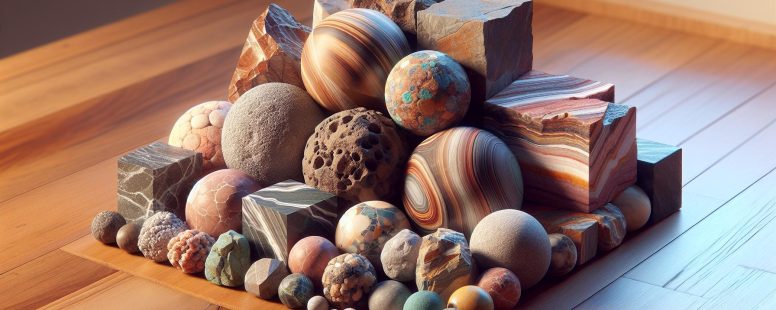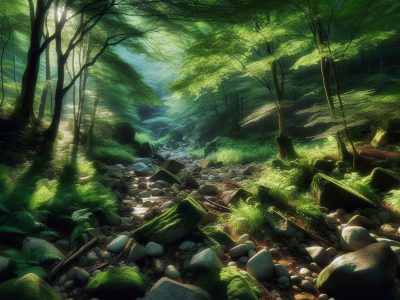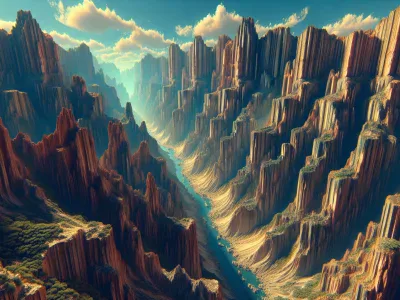Difference Between Igneous, Sedimentary, and Metamorphic Rocks Explained Simply
Rocks are more than just lifeless chunks beneath your feet—they’re storytellers of Earth’s incredible journey. Each type, whether igneous, sedimentary, or metamorphic, carries whispers of fiery origins, ancient rivers, or intense transformations deep underground. These natural wonders don’t just shape our landscapes; they hold the secrets of time itself.
Have you ever wondered why some rocks sparkle with crystals, while others crumble like sand? Or why certain stones seem to tell tales of volcanic fury, while others speak of pressure and heat? Understanding the differences between these rock types isn’t just for geologists—it deepens your connection to the world around you. Get ready to uncover the fascinating processes that create these rocky masterpieces and discover how each type plays a unique role in shaping our planet.
Overview Of Rock Types
Rocks classify into three primary types—igneous, sedimentary, and metamorphic—based on their formation processes. These distinct categories provide insights into Earth’s dynamic systems.
- Igneous Rocks (Example: Granite, Basalt)
Igneous rocks form through the cooling and solidification of magma or lava. Intrusive igneous rocks, like granite, crystallize beneath Earth’s surface, creating coarse-grained textures. Extrusive rocks, such as basalt, emerge from volcanic eruptions, cooling rapidly and developing a fine-grained structure.
- Sedimentary Rocks (Example: Sandstone, Limestone)
Sedimentary rocks form from compressed layers of sediments, including minerals, organic matter, or other rock fragments. They often contain fossils, revealing past environments. Sandstone exemplifies clastic sedimentary rocks, while limestone represents non-clastic, often deriving from marine organisms’ shells.
- Metamorphic Rocks (Example: Marble, Schist)
Metamorphic rocks develop from pre-existing rocks undergoing heat, pressure, or chemical changes without melting. For example, limestone alters into marble through heat and pressure. Schist displays foliated textures due to aligned mineral structures.
Setting these types apart enhances your understanding of Earth’s geological processes. Rocks aren’t static; they evolve, constantly reshaped by powerful forces beneath and above Earth’s crust.
Igneous Rocks
Igneous rocks arise from molten material, forming the foundation of Earth’s crust. They’re direct products of cooling magma or lava, embodying volcanic energy frozen in time.
Formation Process
Igneous rocks form through the solidification of magma beneath the surface or lava above it. Intrusive rocks, such as granite, crystallize slowly within Earth’s crust, allowing minerals to grow visibly. In contrast, extrusive rocks, like basalt, cool quickly at the surface, resulting in fine-grained or glassy textures. This dual origin underlies the diverse characteristics of igneous formations found on Earth.
Characteristics
Igneous rocks exhibit varied textures and compositions based on their formation conditions. Intrusive examples have coarse grains, while extrusive types often appear smooth and compact. These rocks possess high durability, making them resistant to weathering. Their mineral compositions, primarily silicate minerals, range from felsic (rich in silica) to mafic (rich in magnesium and iron). These compositional differences influence their color, density, and geological significance.
Examples
Granite and diorite typify intrusive igneous rocks, showcasing large mineral grains, whereas basalt and obsidian exemplify extrusive types, highlighting fine textures. The widespread basalt of oceanic crust contrasts with granite’s prevalence in continental crusts, demonstrating how igneous rocks shape Earth’s structure.
Sedimentary Rocks
Sedimentary rocks form from the accumulation and compression of sediments, such as sand, silt, clay, and organic material. They often serve as records of Earth’s surface conditions and ancient ecosystems.
Formation Process
Sedimentary rocks originate when sediments are deposited by wind, water, ice, or biological activity. Over time, layers of these materials build up and undergo lithification. The process involves compaction under pressure and cementation by dissolved minerals binding the grains. This formation generally occurs in environments like riverbeds, ocean floors, deserts, and deltas. For example, sandstone forms from compacted sand, while limestone develops in marine settings through the accumulation of shells and coral fragments.
Characteristics
Sedimentary rocks exhibit distinct layers or strata due to the successive deposition of materials. These layers often contain visible fossils, revealing information about past climates and life forms. The texture of sedimentary rocks ranges from coarse-grained, as seen in conglomerates, to fine-grained, evident in shale. They tend to be relatively soft and may react with acids based on their mineral composition, such as calcite in limestone.
Examples
Common sedimentary rocks include sandstone, limestone, and shale. Sandstone consists mainly of quartz grains. Limestone is primarily made of calcium carbonate and often contains marine fossils. Shale forms from compacted clay and silt and typically splits into thin sheets.
Metamorphic Rocks
Metamorphic rocks transform from existing igneous, sedimentary, or other metamorphic rocks due to intense heat, pressure, or chemical processes beneath Earth’s surface. Unlike igneous rocks that form from molten material or sedimentary rocks that arise from deposited layers, metamorphic rocks are products of profound internal changes without melting.
Formation Process
Metamorphic rocks develop under conditions of high temperature, intense pressure, or chemically active fluids. These forces alter mineral compositions and textures of parent rocks (protoliths). Regional metamorphism occurs over vast areas during mountain-building events, creating rocks like schist. Contact metamorphism happens near magma intrusions, where heat alters rocks on a smaller scale, producing materials such as marble. Depending on the environment’s intensity and duration, the original rock alters to varying degrees.
Characteristics
Metamorphic rocks display unique textures and structures due to recrystallization or foliation. Foliated types, like slate and gneiss, have layered patterns formed by alignment of minerals under directional pressure. Non-foliated types, such as marble and quartzite, lack layers but exhibit uniform textures from mineral responses to heat. You’ll often notice these changes altering a rock’s hardness, luster, or density. Metamorphic rocks often retain clues to their past forms—fossil evidence or earlier mineral components might persist.
Examples
Common metamorphic rocks include marble, formed from limestone, often featuring a fine crystalline texture. Schist, developed from shale, shows prominent mica-rich layers. Quartzite arises when sandstone is altered, becoming highly durable. Gneiss, with its banded appearance, evolves from granite. These examples demonstrate how different parent materials and metamorphic forces create diverse outcomes.
Key Differences Among Igneous, Sedimentary, And Metamorphic Rocks
Understanding the key differences among igneous, sedimentary, and metamorphic rocks reveals the dynamic processes shaping Earth. These differences emerge from their formation, appearance, and mineral makeup.
Formation Differences
Igneous rocks form from molten magma cooling and solidifying. Intrusive varieties, like granite, crystallize slowly beneath the surface, while extrusive types, such as basalt, rapidly solidify after erupting from volcanoes. Their formation depends on the environment of cooling—beneath Earth’s crust or above it.
Sedimentary rocks originate from compacted sediments deposited by wind, water, or ice. Examples like sandstone and shale form in layers through deposition and lithification processes. These rocks reflect Earth’s surface conditions, preserving ancient ecosystems and climatic changes.
Metamorphic rocks result from preexisting rocks undergoing transformation under intense heat and pressure, deep within Earth’s crust. This process alters their texture and mineral structures without melting. For example, limestone morphs into marble, while shale transforms into slate.
Texture And Appearance
Igneous rock textures range from coarse-grained in intrusive types to fine-grained or glassy in extrusive ones. Granite’s visible mineral grains contrast with basalt’s smooth, compact surface.
Sedimentary rocks typically showcase layers or strata, with many containing fossils. Sandstone exhibits a gritty texture, limestone’s surface appears smoother, and shale has a flaky structure.
Metamorphic rocks display foliated or non-foliated textures. Foliated examples, like schist and gneiss, show banded or layered patterns, while non-foliated ones, such as marble and quartzite, appear uniform and crystalline.
Mineral Composition
Igneous rocks consist of minerals like quartz, feldspar, and mica, with compositions varying from felsic (light-colored) to mafic (dark-colored). The mineralogy affects their density, hardness, and geological roles.
Sedimentary rocks often contain quartz, calcite, or clay minerals. Organic sedimentary rocks, such as coal, also include plant material remnants.
Metamorphic rocks develop mineral realignments due to heat and pressure. For instance, garnet forms in schist under regional metamorphism, while calcite crystals in marble grow from reformed limestone. This transformation depends on the chemistry and type of their parent rock.
Conclusion
Understanding the differences between igneous, sedimentary, and metamorphic rocks gives you a deeper appreciation for the dynamic processes shaping our planet. Each type of rock carries a unique story, revealing Earth’s history through its formation, texture, and composition.
By exploring these rock types, you gain insight into the powerful forces at work beneath and above the surface. Whether it’s the fiery origins of igneous rocks, the layered records of sedimentary rocks, or the transformative nature of metamorphic rocks, each plays a vital role in Earth’s geological evolution.
Take a moment to observe the rocks around you. They’re more than just part of the world—they’re key to understanding the natural world and its ever-changing processes.
- Who Is Better Messi or Ronaldo? A Deep Dive into Football’s Greatest Rivalry - October 29, 2025
- Pros and Cons of Partnerships: Key Benefits and Challenges to Consider - October 29, 2025
- King vs Queen Size Bed: An In-Depth Comparison for Your Perfect Mattress Choice - October 29, 2025







